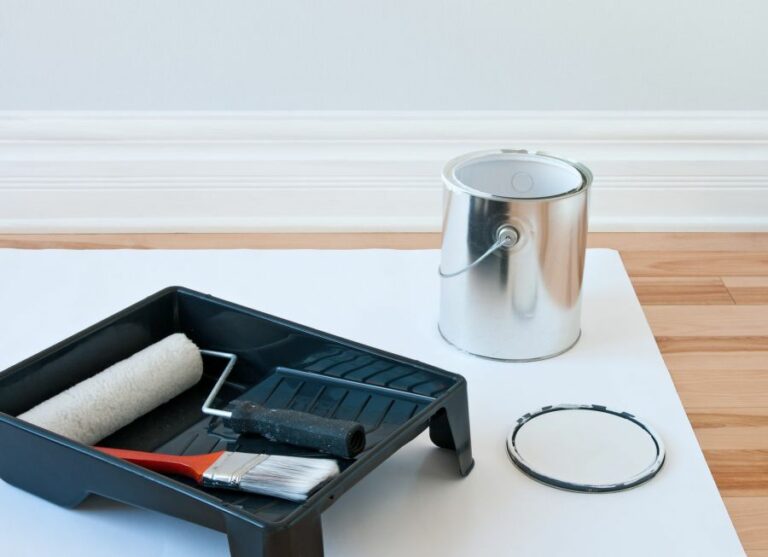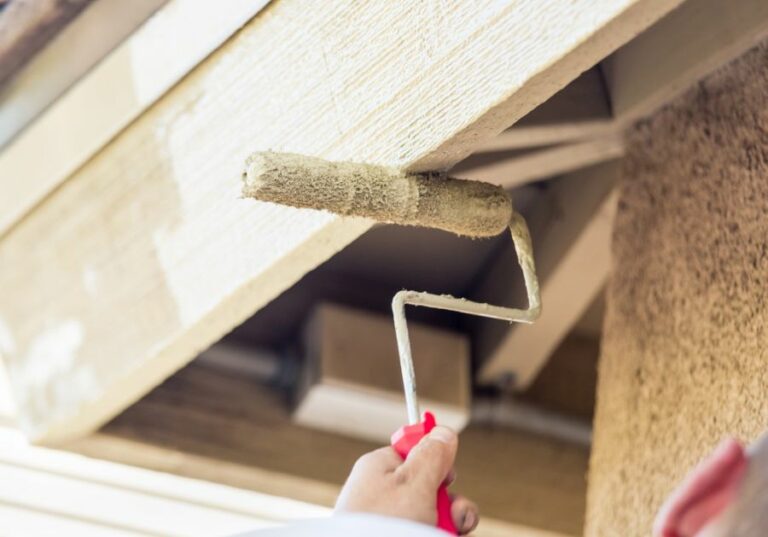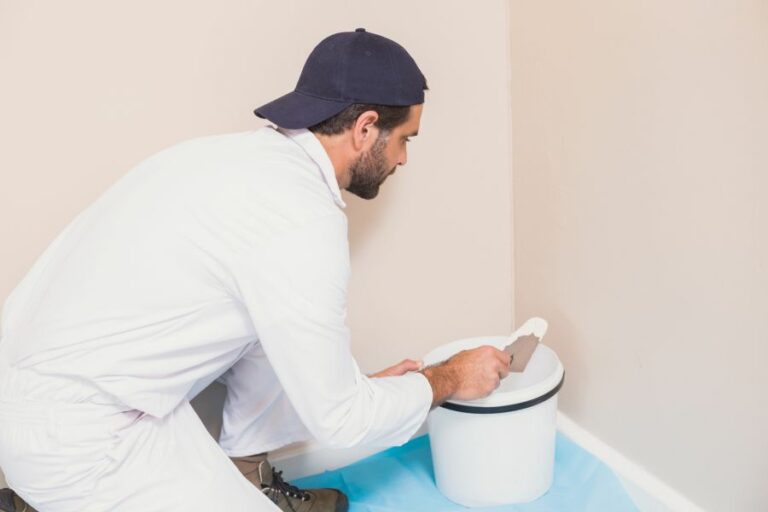Fill Gaps & Repair Uneven Surfaces. What professionals say
If you’ve ever struggled with uneven surfaces, gaps, or inconsistencies in your floors, walls, or furniture, you know how important it is to find a reliable solution. Lucky for you, we’ve got extensive experience in tackling these issues, and we’re here to help you confidently navigate the world of repair. With the right tools, materials, and guidance, you’ll be able to easily fill gaps and repair uneven surfaces, giving your space the polished, professional look you’ve always desired.
Fill gaps & repair uneven surfaces:
To fill gaps and repair uneven surfaces, first identify and assess the damage. Then, choose an appropriate filler material, like acrylic caulk, polyurethane foam, or epoxy mortar. Apply the filler to the area, ensuring it’s smooth and level. Allow the repair to dry before applying any finishing touches. Use methods like patching, grinding, or overlay for uneven pavement or roads. Address gaps in floorboards, tiles, or slabs with suitable repair solutions. Consult professionals if unsure about the best approach.

Have you ever faced the challenge of fixing uneven surfaces or filling gaps in your home? No need to worry, as we have an arsenal of tips and tricks that will make this task a breeze. Keep reading to uncover the secrets to achieving a smooth finish every time!
Contents
- 1 Fix Voids & Smooth Irregular Surfaces
- 2 Best Materials for Filling Gaps
Fix Voids & Smooth Irregular Surfaces
Filling gaps and repairing uneven surfaces is an essential process for maintaining the structural integrity of buildings, roads, and other infrastructure. It is crucial to address these issues as soon as they arise to prevent further damage from occurring.
• Identifying and Assessing Gaps and Uneven Surfaces
The first step to fixing any gap or uneven surface is to properly identify the issue and assess the extent of the damage. Depending on the type and severity of the gap or uneven surface, different methods may be needed to repair the area effectively.
Common gaps and uneven surfaces include:
- Cracks in walls, foundations, or floors
- Uneven pavement or roads
- Gaps between floorboards, tiles, or slabs
- Damage from water, moisture, or other external factors
To assess the severity of the issue, consider factors such as the size and depth of the gap, the presence of moisture or mold, and the structural integrity of the affected area. In some cases, professional assistance may be necessary to evaluate the situation accurately.
• Repairing Cracks and Gaps in Walls, Foundations, and Floors
Cracks and gaps in walls, foundations, or floors are often signs of structural damage and should be addressed promptly. The following are steps to take when repairing these types of issues:
– Step 1: Clean the Area
Before starting any repair work, it is essential to clean the area thoroughly. Remove loose debris, dirt, and dust from the crack or gap using a brush, vacuum, or a damp cloth. Cleaning the area will help ensure that the filler material adheres properly to the surface.
– Step 2: Choose the Right Filler Material
Selecting the appropriate filler material is crucial for achieving long-lasting repair results. Some common options include:
- Acrylic caulk: Suitable for small cracks and gaps, acrylic caulk is easy to apply and cleans up with water.
- Polyurethane foam: Ideal for larger gaps and cavities, polyurethane foam expands and hardens upon application, providing a sturdy and flexible repair solution.
- Epoxy mortar or cement: Recommended for significant structural cracks or gaps, epoxy-based repair materials offer superior strength, adhesion, and durability.
– Step 3: Apply the Filler Material
Following the manufacturer’s instructions, apply the chosen filler material to the crack or gap, ensuring it fills the space entirely. Use a putty knife, trowel, or other appropriate tools to smooth and level the material with the surrounding surface.
– Step 4: Allow the Repair to Dry
Before applying any finishing touches or paint, allow the repaired area to dry and cure fully. The drying time may vary depending on the type of filler material used and the environmental conditions.
• Repairing Uneven Pavement or Roads
Uneven pavement or roads can create hazards for pedestrians and drivers alike. Addressing these issues promptly will improve safety and prolong the life of the pavement.
– Step 1: Assess the Damage
Identify the type and extent of the uneven surface, such as potholes, cracks, or frost heaves. Depending on the situation, different repair methods may be necessary.
– Step 2: Choose the Appropriate Repair Method
Some common techniques for repairing uneven pavement or roads include:
- Patching: Filling small holes or cracks with new asphalt, concrete, or other paving material.
- Grinding: Removing the top layer of damaged pavement and smoothing the surface with a grinding machine.
- Overlay: Applying a new layer of pavement material over the existing surface to level the area.
– Step 3: Complete the Repair
Following the chosen repair method, complete the necessary steps to fix the uneven pavement or road, ensuring a smooth and safe surface for users.
• Addressing Gaps in Floorboards, Tiles, or Slabs
Gaps between floorboards, tiles, or slabs can be both unsightly and problematic. Repairing these gaps will improve the appearance and overall integrity of the surface.
– Step 1: Determine the Cause of the Gaps
Identify the reason for the gaps in the surface, such as shrinkage, water damage, or improper installation. Understanding the cause will inform the best repair approach.
– Step 2: Choose the Appropriate Repair Solution
Select the right repair solution for the gap issue:
- For floorboards, use wood filler or a thin wooden shim to close the gap.
- For tile gaps or grout issues, use grout, caulk, or other tile repair materials.
- For slab gaps, use a concrete repair product or sand to fill the gap and create a level surface.
– Step 3: Finish the Repair
After applying the chosen repair solution to the gap, smooth and level the material with the surrounding surface. Allow the repair to dry and cure according to the manufacturer’s guidelines.
• Additional Resources for Gap and Uneven Surface Repair
For more information, consider the following resources for gap and uneven surface repair techniques:
- National Park Service – Preservation Brief: Repairing Historic Flat Plaster.
- Portland Cement Association – Guide to Repairing Concrete.
In conclusion, it’s essential to address gaps and uneven surfaces promptly to maintain the safety and structural integrity of buildings, roads, and other infrastructure elements.
By employing proper techniques and selecting the right materials for the job, you can achieve long-lasting and effective repairs. Always consult with professionals if you are unsure of the best approach for your specific situation.
Category | Product | Description |
|---|---|---|
Fill gaps | Acrylic Latex Caulk | Flexible, paintable, and easy to apply. Suitable for filling small gaps and cracks in walls, ceilings, and trim. |
Joint Compound | Smooth, easy-to-sand compound used for embedding drywall joint tape, filling, and finishing joints, edges, and corners. | |
Repair uneven surfaces | Spackling Paste | Thick paste used for filling holes, dings, and dents in walls, ceilings, and trim. Easy to apply, sand, and paint. |
Fill gaps | Silicone Sealant | Waterproof, flexible, and durable sealant used for filling gaps and sealing joints and seams both indoors and outdoors. Not paintable. |
Repair uneven surfaces | Concrete Patch | Heavy-duty cement-based compound used for repairing large cracks, holes, and spalled surfaces in concrete. |
Best Materials for Filling Gaps
Filling gaps, whether they’re in walls, floors, or other surfaces, is a common task that many people must tackle at some point in time. Choosing the right materials to effectively fill these gaps is crucial for both aesthetic and functional reasons.
• Wood Fillers
Wood filler is a popular choice for filling gaps in wooden surfaces, such as furniture, flooring, and trim. It is available in a variety of types, including water-based, solvent-based, and epoxy-based fillers, and can be colored to match the wood surface.
Wood fillers are typically easy to sand, stain, and finish, making them ideal for achieving a seamless appearance.
– Advantages:
- Matches the color and texture of wood for seamless blending
- Sandable, stainable, and paintable
- Available in various types
- Affordable and easy to find
– Disadvantages:
- Not suitable for large gaps or structural repairs
- May shrink or crack over time
Recommendation: I recommend using Minwax High Performance Wood Filler for filling gaps in wooden surfaces, as it is a reliable and versatile option. Additional information about this product is available here.
• Caulks and Sealants
Caulks and sealants are commonly used to fill gaps in various surfaces, including walls, windows, doors, and plumbing fixtures. These materials are typically rubbery and flexible, allowing for a watertight and airtight seal. They can be categorized into two main types: latex (water-based) and silicone.
– Advantages:
- Flexible and durable
- Resistant to water and temperature fluctuations
- Adheres to various surfaces
- Paintable (latex caulk)
– Disadvantages:
- Not ideal for aesthetic repairs or filling large gaps
- Silicone caulk is not paintable and may discolor over time
Recommendation: I recommend DAP ALEX PLUS as an excellent latex caulk for general use. This product offers excellent adhesion and can be painted over. More information can be found here.
• Plaster and Joint Compounds
Plaster and joint compounds are used for filling gaps and leveling surfaces on walls and ceilings. These materials are suitable for patching cracks, holes, and dents and can be sanded and painted once dry. There are various types, including pre-mixed, setting, and lightweight compounds.
– Advantages:
- Ideal for filling larger gaps and surface repairs
- Can be sanded and painted
- Suitable for walls and ceilings
– Disadvantages:
- May require multiple applications to achieve the desired result
- Longer drying times
- Not suitable for flexible surfaces
Recommendation: For an excellent all-purpose joint compound, I recommend USG Sheetrock All Purpose Joint Compound. It is easy to work with and dries quickly, allowing for efficient repairs.
• Expanding Foam
Expanding foam is a polyurethane-based product that expands upon contact with air, making it an excellent option for filling larger gaps and voids.
This material is frequently used for insulation, as well as sealing gaps around windows, doors, and pipes.
– Advantages:
- Expands to fill large gaps and voids
- Good insulating properties
- Can be trimmed, sanded, painted, and stained
– Disadvantages:
- Can be messy to use
- Difficult to control
Recommendation: GREAT STUFF Window & Door Insulating Foam Sealant is a reliable option for filling large gaps, particularly around windows and doors. It is easy to use and provides a tight seal.
• Conclusion
The right material to fill gaps depends on the specific surface, the size of the gap, and the desired appearance. By considering the various advantages and disadvantages of each material, as well as the recommendations provided, you can effectively choose the most suitable option for your needs.
Always be sure to follow manufacturer instructions and safety guidelines when using these materials.







